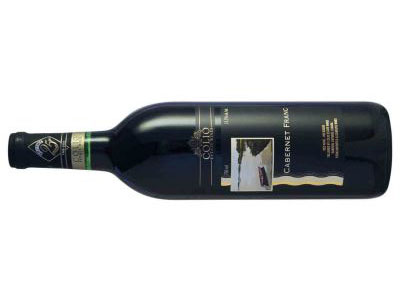
I have been drinking Canadian wine for decades and it has been getting better over the years. But I have never reviewed a Canadian wine until now.
You may not realize it, but Canada’s wine producing regions are at the same latitude as the almost too hot region of Provence, France and the it’s almost perfect temperature of Tuscany, Italy. So I guess that we can say latitude is not everything. Don’t get me wrong. Canada produces some fine wines, for example Equuleus from the Paul Bosc Estate Vineyard for which you’ll pay about $33 or more. Canadian ice wine is said to be the best in the world. You won’t find it reviewed here for obvious reasons. Most Canadian wine comes from Ontario, Canada’s largest and most populous province. Most Ontario wine comes from the Niagara region not far from New York State. The wine reviewed below comes from the other end of southern Ontario, the Lake Erie North Shore region not far from the state of Michigan. Parts of this region are south of Detroit. This is a VQA wine, which means that it meets a series of Canadian standards. In the words of a great wine writer, Tom Stevenson, “Whereas most legally imposed systems indicate mediocrity, the self-regulated VQA seal has driven Canadian producers to higher and higher standards.”
OUR WINE REVIEW POLICY : All wines that we taste and review are purchased at the full retail price.
Wine Reviewed
Colio Estate Cabernet Franc VQA 2007, 12.8% alcohol about $9.50
Let’s start with the marketing materials.
Tasting Note: Red ruby colour; cassis, cherry, mineral with vanilla, spice and green pepper/herb aromas; dry, medium-body with ripe black berry, plum and light chocolate flavours; fruit and cedar on the finish.
Serving Suggestion: Veal; beef dishes; game; herbed chicken; bbq; pasta.
I started by sipping this wine alone. It was strongly yet not unpleasantly acidic and tasted of tobacco. The first meal involved purchased barbecued chicken wings, chicken breast, and potatoes roasted in chicken fat. The tobacco taste was very dominant. The wine was quite acidic, which was good with greasy food. A fresh, but not very tasty mango, flattened it. Some fruit juice candy brought out the cedar.
The second meal consisted of commercial barbecued beef ribs, green beans in tomato sauce, and homemade roasted eggplant with lots of garlic. With the ribs I tasted black cherry and plums in the wine. In contrast the eggplant gave me chocolate. Interestingly enough when I added a hot-pepper condiment to the meat the chocolate taste became minty.
The final meal was beef stew and chicken meatballs slow cooked together with soft wheat. Now I tasted leather, chocolate, and pepper. The wine was more complex than can usually be expected in this price range. But at the end it was thin and somewhat sour. I tasted it with a high-quality, French style, very buttery and lemony lemon pie right out of the freezer. Get this, the wine tasted of cherries.
I finished this tasting with two cheeses. The first cheese was a Provolone. The wine was sour and quite short. Then with some string, skim milk Mozzarella the wine was essentially tasteless. Before I give my verdict let me tell you if you don’t already know I am rarely a fan of wine and cheese pairings and won’t let these pairings change my final verdict.
Final verdict. Pretty good. This wine had a lot more in it than many others in its price range. But I think I can do much better in 2009. Sometimes. Without having so planned, I just finished reviewing a Bourgueil wine from the Loire Valley of central France made from the same grape variety, Cabernet Franc, the signature red grape in those parts. That French wine cost almost twice the price of this Canadian. Was it better? Yes. Was it twice as good? Absolutely not. Draw your own conclusions.
By Levi Reiss
1 Comment
1 Pingback